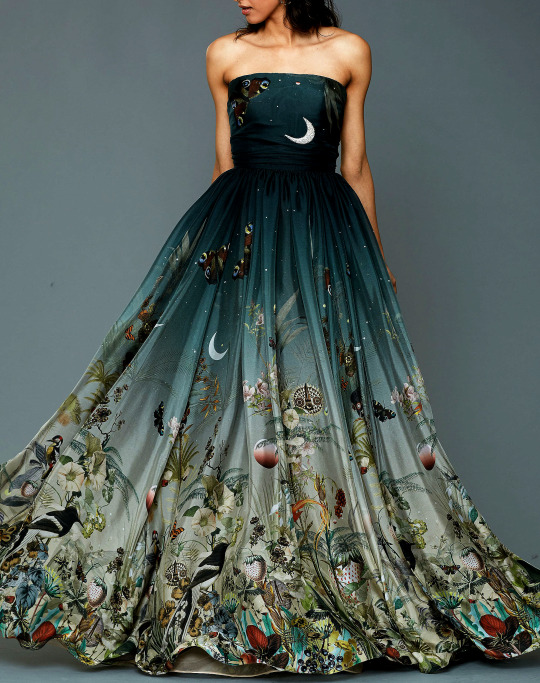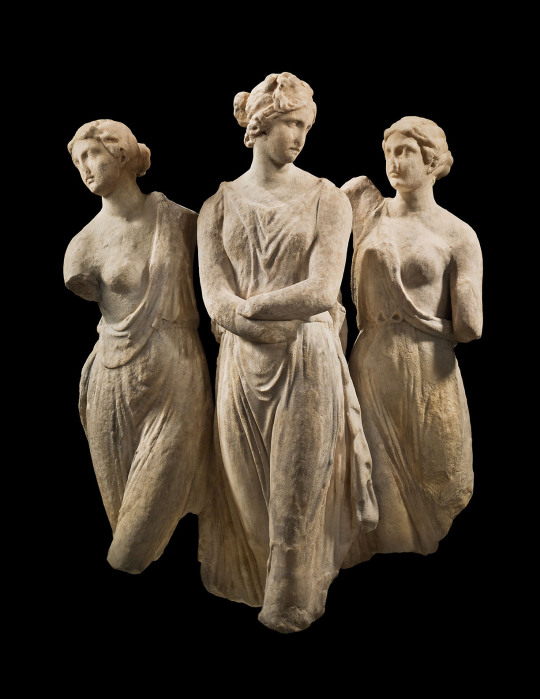Don't wanna be here? Send us removal request.
Photo

People Drink Tea by the River, 2013
Zhang Kechun
1K notes
·
View notes
Photo




People will stare. Make it worth their while → Dennis Basso | Pre-Fall ‘16
72K notes
·
View notes
Photo

The Three Graces, Hellenistic, c. 2nd-1st Century BC
Graces (or Charites) are goddesses of charm, beauty, nature, human creativity and fertility. They are, from youngest to oldest: Aglaea (“Splendor”), Euphrosyne (“Mirth”) and Thalia (“Good Cheer”).
The Charites were usually considered the daughters of Zeus and Eurynome, though they were also said to be daughters of Dionysus and Aphrodite or of Helios and the naiad Aegle. Homer wrote that they were part of the retinue of Aphrodite. The Charites were also associated with the Greek underworld and the Eleusinian Mysteries. The river Cephissus near Delphi was sacred to them.
7K notes
·
View notes
Photo

Artemisia Gentileschi, Judith Slaying Holofernes, ca. 1614–20. Oil on canvas, 6’ 6¹/₃" × 5’ 4".
28 notes
·
View notes
Photo

Caryatid Mirror with Aphrodite
Greece, ca. 460 BC (Classical)
Bronze
A graceful female figure serves as a “caryatid,” or human support, for a mirror. The figure’s pose, demure gestures, and simple drapery characterize the quiet elegance of the Early Classical style. The presence of the winged Eros figures (representing the god of love) above suggests that the maiden is a bride or perhaps Aphrodite herself. The siren at the top of the disk recalls the irresistible allure of these mythical bird-women.
From the Walters Art Museum
750 notes
·
View notes
Photo

Rafael Sottolichio (Chilean-Canadian, b. 1972, Santiago, Chile, based Quebec) - Other, 2008 Paintings: Oil, Acrylics on Canvas
291 notes
·
View notes
Photo

Our Moon seen from the ISS (International Space Station)
“Tonight when the new Moon rises, or in the next few nights when the Moon is a slim crescent, go outside and look up. You might see Earth’s reflected light in the dim glow.
A new Moon occurs when all of the Sun’s light is reflected away from Earth, and the side of the Moon facing Earth is barely visible, as illustrated in the above figures. Sometimes the dark face of the Moon catches Earth’s reflected glow and returns that light. The dark face of the Moon has a faint shine, a ghostly version of a full Moon. The phenomenon is called earthshine. It tends to be brightest between April and June, though it does occur at other times of the year. The photo at the top of the page was taken by an astronaut on the International Space Station on July 31, 2011.”
Credit: NASA Earth Observatory
454 notes
·
View notes
Photo

Frederick Richard Pickersgill - An offering at the Ganges - Circle
490 notes
·
View notes
Photo

A nephrite head was part of a full suit that encased a local king, Liu Yen buried in
203 notes
·
View notes
Photo

Terracotta Head of a Bodhisattva wearing a garland Gandhara
5th century (from John Eskenazi Ltd.)
146 notes
·
View notes






